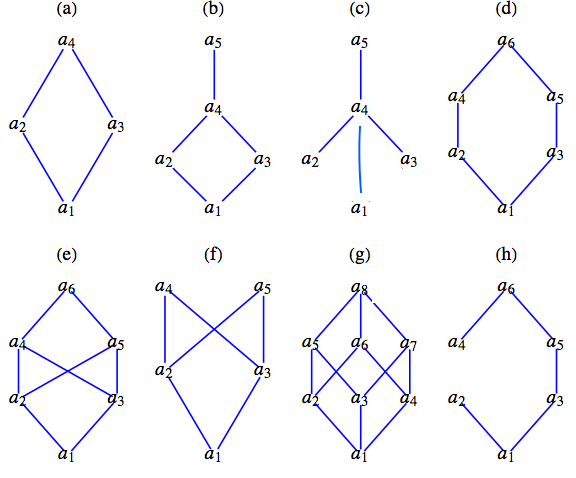Definition 13.1.1. Partial Ordering.
Let \(\preceq\) be a relation on a set \(L\text{.}\) We say that \(\preceq\) is a partial ordering on \(L\) if it is reflexive, antisymmetric, and transitive. That is:
-
\(\preceq\) is antisymmetric: \(a \preceq b \textrm{ and } a \neq b \Rightarrow b \npreceq a \quad \forall a,b \in L\)
-
\(\preceq\) is transitive: \(a \preceq b \textrm{ and } b \preceq c \Rightarrow a \preceq c \quad \forall a,b,c \in L\)
The set together with the relation \((L, \preceq)\) is called a poset.



